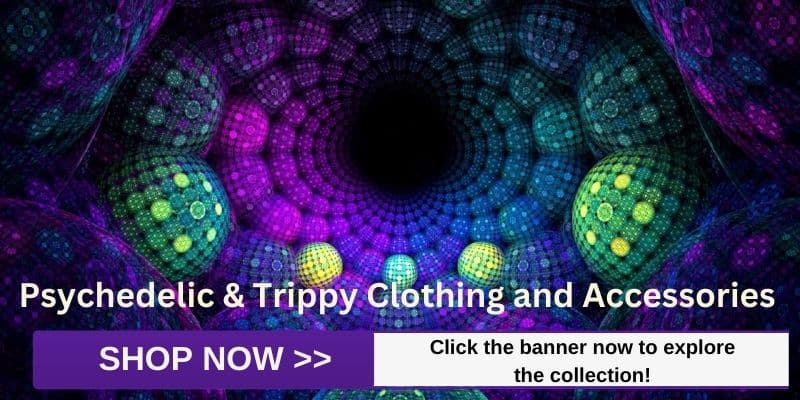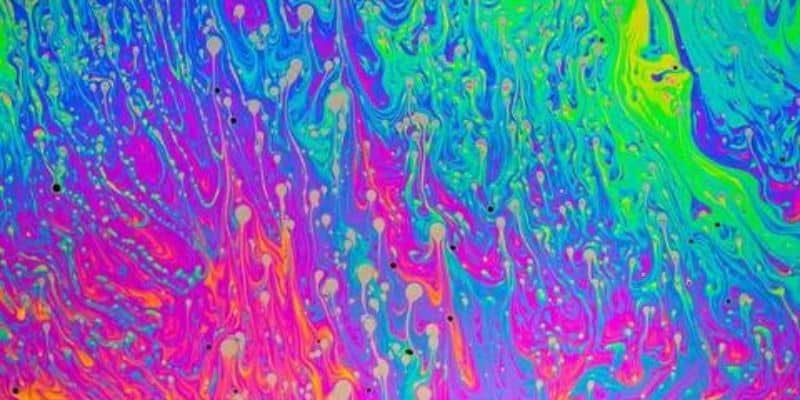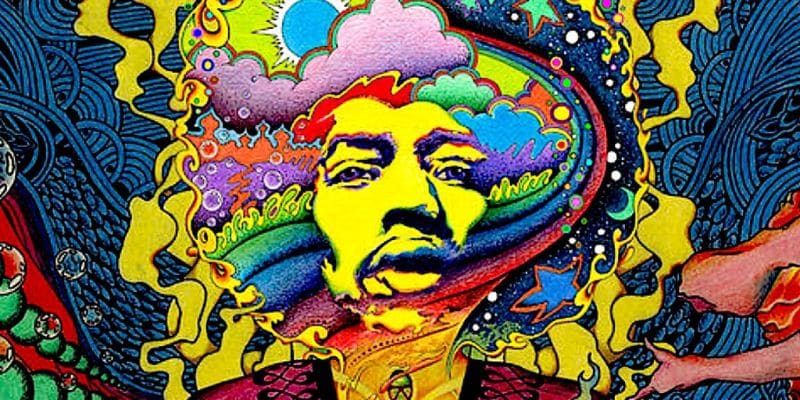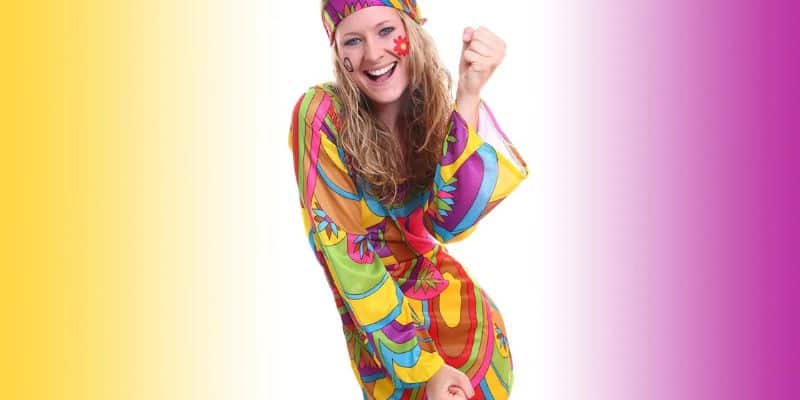Welcome to your ultimate guide to psychedelic fashion, a realm where vivid colors meet bold patterns, and each piece tells a story of cultural revolution and artistic expression. If you’ve ever marveled at the swirling designs and neon hues characteristic of psychedelic fashion, you’re in for a fascinating journey through its vibrant history and enduring impact.
The term “psychedelic” itself originates from the Greek words “psyche” (mind) and “delos” (manifest), forming a concept that means “mind-manifesting.” This is a fitting description for a fashion style that’s not only about appearance but also about manifesting a broader consciousness. Psychedelic fashion is famous for its bright, almost hallucinogenic colors and patterns designed to evoke a sense of deep visual and emotional experience.
This fashion style first took root in the 1960s, a decade known for its counterculture movement, which challenged the norms of the time and pushed for profound social changes. The psychedelic aesthetic was more than just apparel; it was a form of rebellion, a visually loud expression against conservative dress codes, mirroring the era’s groundbreaking music and art scenes. Figures like Jimi Hendrix and Janis Joplin didn’t just wear their outfits—they wore statements, influencing generations to come.
As we delve deeper, we’ll explore how psychedelic fashion mirrored the social changes of its time, embedding itself in the fabric of music, art, and global culture shifts. From its 60s roots to its modern resurgence, understand how this style continues to influence the fashion world today. So, tighten your seatbelt, and let’s embark on this colorful journey through the evolution of psychedelic fashion.

The Evolution of Psychedelic Fashion
The 1960s: Birth of a Style
The psychedelic fashion era blossomed in the 1960s, a period ripe with social upheaval and cultural revolutions. If you picture the 60s, you might imagine bright colors, swirling patterns, and the bold, unmissable style of tie-dye—these are the hallmarks of psychedelic fashion. This style was not just about standing out; it was about making a statement of freedom and rebellion against the rigid norms of previous decades.
Influential figures like The Beatles and Jimi Hendrix didn’t just wear their clothes; they wore art. Their iconic style choices helped propel psychedelic fashion from niche countercultural circles into the global spotlight. Designers such as Mary Quant, who is often credited with the miniskirt, and Emilio Pucci, known for his vivid prints, played significant roles in bringing psychedelic patterns and colors to the forefront of fashion.
The 1970s and Beyond
As the 60s gave way to the 70s, psychedelic fashion evolved rather than disappeared. The bright palettes and audacious patterns transitioned into the disco and glam rock styles that dominated the next decade. This era saw psychedelic fashion morphing into something that could be found both in high-end boutiques and everyday street wear. Flared pants, platform shoes, and glittering outfits that sparkled under disco balls carried the psychedelic spirit forward, incorporating more synthetic fabrics and futuristic designs.
Designers like Vivienne Westwood began to push the boundaries even further, blending psychedelic motifs with punk elements, showing how the movement’s influence had permeated diverse aspects of fashion. This period demonstrated the versatility of psychedelic fashion—its ability to adapt and morph into new trends while maintaining its core ethos of bold expression.
Modern Resurgence
Fast forward to today, and you’ll see that psychedelic fashion is experiencing a vibrant resurgence. Modern music festivals such as Coachella and Burning Man have become hotbeds for psychedelic-inspired attire, where attendees often sport outfits featuring neon colors, complex geometric patterns, and an array of LED lights, all reminiscent of the style’s 60s roots.
Moreover, digital art and advances in fabric technology have opened new avenues for psychedelic fashion. Designers can now create dynamic, bold patterns that were once impossible, helping to fuel a new wave of interest in the style. Brands like Prada and Louis Vuitton have incorporated psychedelic elements into recent collections, proving that what started as a form of cultural rebellion has now firmly established itself as a versatile and enduring influence in global fashion.
Psychedelic fashion, from its explosive start in the 60s to its modern-day revival, shows the enduring appeal of clothing as a canvas for personal and cultural expression. As you explore this style, remember that it’s more than just apparel—it’s a vibrant history woven into the very fabric of modern fashion.
Characteristics of Psychedelic Fashion

Color Palette
When you think of psychedelic fashion, the first thing that likely comes to mind is its color palette. Vibrant and neon colors are not just a choice but a hallmark of the style. These colors aren’t just for show—they play a significant role in how the fashion is perceived and the statement it makes. Colors like hot pink, electric blue, and vivid green can energize and attract attention, creating a visual pop that stands out in any crowd.
The psychological impact of these colors is profound. Bright hues can uplift your mood, evoke emotions, and alter your perception, making them a powerful tool in the psychedelic fashion arsenal. The use of such intense colors is designed to mimic the mind-altering experiences that psychedelics are known for, offering a visual journey that’s both bold and transformative.
Patterns and Designs
Psychedelic patterns are as integral to the style as the color choices. Common patterns include paisley, with its intricate and curvaceous design; spirals, which can seem to move and swirl before your eyes; and kaleidoscope patterns, known for their mesmerizing, repetitive designs that captivate and dazzle. These patterns are often designed to simulate the dynamic visuals one might experience during a psychedelic trip, adding a layer of depth and intrigue to each piece of clothing.
Various techniques are employed to achieve these intricate designs, with tie-dye, batik, and screen printing being among the most popular. Tie-dye, for instance, offers a way to create unpredictable, vibrant patterns that are unique to each piece. Batik, an ancient fabric dyeing process, allows for intricate, layered color effects, while screen printing can produce sharp, vivid patterns that endure over time.
Fabrics and Materials
The fabrics used in psychedelic fashion are as diverse as the patterns they exhibit. In the 1960s, synthetic fabrics like polyester were popular for their vibrant color retention and fluid drape, which suited the bold prints of the time. Today, there’s a growing awareness of the environmental impact of fashion, leading to more sustainable practices in the creation of psychedelic clothing.
Modern psychedelic fashion often incorporates organic cotton, bamboo, and other eco-friendly materials that reduce environmental impact. These fabrics not only support sustainable fashion trends but also enhance the comfort and wearability of the clothes. Designers are increasingly mindful of their fabric choices, aiming to merge the eye-catching appeal of psychedelic fashion with responsible manufacturing processes.
As you explore psychedelic fashion, you’ll discover that it is not just about appearance but also about the experience—both visual and tactile. The combination of bold colors, dynamic patterns, and thoughtful fabric choices makes psychedelic fashion a compelling and continuously evolving art form.
Psychedelic Fashion Icons and Their Influence

Historical Icons
In the 1960s and 70s, several celebrities stood at the forefront of the psychedelic fashion movement, turning their personal style into cultural icons. Jimi Hendrix, with his flamboyant jackets and vibrant scarves, exemplified psychedelic style, using his wardrobe as an extension of his electric stage presence. Janis Joplin’s feather boas, bell-bottoms, and beaded necklaces also painted a vivid picture of the era’s free-spirited ethos.
The Beatles, particularly during their “Sgt. Pepper’s Lonely Hearts Club Band” era, donned military-style suits with a psychedelic twist, featuring bright colors and elaborate patterns. Their influential style was not just a personal choice but a reflection of the vibrant youth culture of the time.
Fashion designers of the era such as Mary Quant, who popularized the mini skirt, and Emilio Pucci, known for his abstract prints and bold color palettes, played pivotal roles in bringing psychedelic fashion from the fringes to the mainstream. Their designs challenged the conservative clothing of previous generations and opened up new vistas in color and pattern that resonated deeply with the youth of the day.
Contemporary Icons
Today, psychedelic fashion remains a vibrant part of modern style, thanks in part to contemporary celebrities and designers who have embraced and promoted its resurgence. Figures like Lady Gaga and Pharrell Williams, known for their eclectic and boundary-pushing fashion choices, often incorporate psychedelic elements into their outfits, which are then showcased across media and social platforms, reaching millions of followers.
Designers like Jeremy Scott, who helms Moschino, and fashion houses like Versace continue to infuse their collections with psychedelic prints and colors, drawing on historical elements while injecting modern flair. These contemporary icons not only celebrate the vibrancy and freedom of psychedelic fashion but also adapt it to fit today’s aesthetic and ethical standards.
Their influence extends beyond the runway. Through social media, these modern icons set trends and inspire fans and fashion enthusiasts around the world to experiment with psychedelic styles. Instagram, Pinterest, and fashion blogs are now filled with vibrant psychedelic-inspired outfits, demonstrating the enduring appeal and adaptability of this bold fashion style.
As you delve into psychedelic fashion, you’ll see that its icons, both past and present, have not just worn clothes; they’ve made statements. Their choice of attire is a powerful form of expression that continues to influence fashion trends and cultural norms, celebrating a legacy of color, pattern, and boundless creativity.

Impact of Psychedelic Fashion on Society
Expression of Freedom and Rebellion
Psychedelic fashion isn’t just a style; it’s a statement. From its roots in the 1960s, this fashion genre has symbolized nonconformity and creativity, serving as a vivid emblem of freedom and rebellion. When you see the swirling colors and bold patterns, you’re not just looking at clothing but at a historical expression of the desire to break free from societal norms.
In the 1960s and 70s, wearing psychedelic fashion became a way to visually shout against conservative values, aligning with the counterculture movement that included anti-war protests and civil rights marches. The boldness of the style reflected the boldness of the statements being made—demanding attention and challenging the status quo. Psychedelic fashion was, and still is, worn by those who want to stand out, speak up, and challenge traditional aesthetics and values. It’s a fashion choice that says, “I am different, and I am proud.”
Psychological Impact
The impact of psychedelic fashion extends beyond the social and into the psychological. Wearing these vibrant patterns and colors can significantly affect your mood and perception. It’s not just about looking unique; it’s about feeling different. Studies on color therapy have shown that colors can influence our emotions and mental states. Bright, vivid colors, often found in psychedelic patterns, can energize and uplift your spirit, making you feel more vibrant and alive.
Furthermore, the complex and often mesmerizing designs of psychedelic fashion can stimulate the mind, offering a visual escape from the mundane. The intricate patterns can draw your eye and hold your attention, providing a form of visual meditation that can be both calming and inspiring. This mental engagement is not just a byproduct of the style; it’s a deliberate invocation of the psychedelic experience, which aims to expand the mind and enhance sensory experiences.
Wearing psychedelic fashion can be a deeply personal choice that aligns with a desire for personal expression and psychological exploration. It’s a way to visually and mentally break away from the everyday and enter a space of heightened creativity and freedom.
As you explore or embrace psychedelic fashion, remember that it’s more than just clothing. It’s a cultural tool that has been used to shake up societies, a psychological aid that can alter mood and perception, and a vibrant art form that continues to evolve and influence. Whether you’re wearing a tie-dye shirt or a paisley print dress, you’re part of a long tradition of cultural and personal expression that is as profound as it is colorful.

Conclusion
As we’ve journeyed through the colorful world of psychedelic fashion, from its spirited beginnings in the 1960s to its modern resurgence, it’s clear that the appeal of this bold and expressive style is more than just a fleeting trend. Psychedelic fashion continues to resonate with people across generations for its vibrant celebration of freedom, creativity, and nonconformity. It offers a unique way for you to express individuality while also connecting with a broader cultural and historical narrative.
Looking ahead, the future of psychedelic fashion appears as dynamic and vibrant as its patterns. With advances in technology, designers have new tools at their disposal that can push the boundaries of what’s possible in fabric design and garment construction. Imagine clothes that change color based on your mood or patterns that move and shift as you do—these could be the next steps in the evolution of psychedelic fashion. Moreover, the growing emphasis on sustainability in the fashion industry is likely to influence how psychedelic garments are made, leading to innovations in eco-friendly dyes and recycled materials that meet both aesthetic and environmental standards.
As you wear or admire psychedelic fashion, remember that you are part of a continuing story of artistic and social exploration. This style is not just about the clothes you wear but about the statement you make and the community you build around bold, expressive design. Psychedelic fashion is poised to keep spinning its vivid tale, with bright colors and swirling patterns that invite us all to think differently, dress boldly, and move confidently into a creative future.

